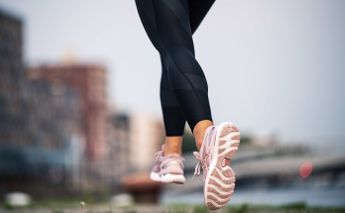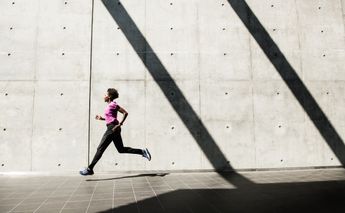While this can be frustrating to find all of your regular pre-pandemic go-to ingredients and food favourites, these unprecedented time also affords an opportunity to be creative - a time to think outside the box, to learn new flavours textures and appreciate the nutrient content of different foods.
Below are a handful of ingredients you may find you have in your store cupboard for that proverbial 'rainy' day.
Here are some tips from sports dietician and ASICS FrontRunner, Renee McGregor, on how to jazz them up and make them into nutrient dense, nourishing meals/snacks to help you fuel your body.
EGGS
So eggs are most probably a staple in most households but if not they are definitely one food we recommend you have a good supply of.
They may be small but eggs really make a punch when it comes to nutritional value; 2 medium eggs provide you with around 15g of protein, 100% of your daily requirement of Vitamin B12, essential for the formation of red blood cells as well as being packed with selenium, powerful anti-oxidant, making them ideal as a recovery food post training.
A lot of people still avoid eggs due to the concern over cholesterol but in fact a medium egg only contains 4.6g of fat of which only 1.3g comes from saturated fat.
And if you still need convincing, Studies have shown that individuals who consumed two eggs for breakfast every morning were more satisfied and less likely to snack through the morning, making eggs a really good start to the day.
Top Nutrition Tip: Try making a Frittata –load it up with any vegetables you may have in your fridge or even frozen varieties, throw in a handful of cheese or tofu to ensure you meet your calcium requirements for the day and serve with wholemeal pitta for an easy but nutrient sense recovery meal.
OATS
We’ve all been told time and time again how oats is the best start to the day. It is low in fat, high in soluble fibre and also a great source of complex carbohydrate. This means that it releases energy slowly throughout the day, preventing blood sugar fluctuations or energy crashes. That said, they don’t necessarily need to be eaten as porridge. You can eat them cold in the form of overnight oats or standard muesli or if you are feeling particularly creative, why not try the oaty pancakes. If you really are not a morning oat person, you could have oatcakes or even making your own energy bars which you could have as snack pre- or during training. Whichever way, they should definitely be on your list as a go to food to provide sustained energy for the body, while also being a reasonably priced product.
Nutrition tip: try adding them to a pre-workout smoothie.
PASTA
For years this has been known as the endurance fuel of choice. However, in recent years with many athletes being persuaded to go gluten free pasta – particularly white pasta – has become associated as being a processed food, something that should be avoided. However, can something that is made simply from wheat and egg be bad for us?
Pasta is a great source of carbohydrate; necessary for our bodies to work at a high intensity. It also provides B Vitamins, folate and thiamine, necessary for many biological processes within the body. Wholegrain varieties have the additional benefit of providing fibre, important for healthy digestive system. When it comes to which is best, it comes down to preference –both are nutrient dense, especially if served with roasted vegetables, and grilled fish/chicken.
Nutrition tip: Combine with some tinned fish, throw in several handfuls of frozen vegetables, top with cheese for an alternative to a pasta bake. Great as recovery meal to help refuel and prepare your body for next training session.
RED LENTILS
As a vegetarian, this has been a staple in my diet for years. However, I appreciate for many when faced with the challenge of what to do with them, they are at a bit of a loss. Red lentils are pretty bland in flavour and texture. In order to make them flavoursome, I recommend adding herbs, spices or add them to other dishes. One such example is replacing half the mince you would use for a Bolognese sauce with red lentils. This will improve the nutritional composition of your meal by reducing the overall intake of saturated fat; increasing the soluble fibre content, while still maintaining the iron composition of the meal. Red lentils are a great prebiotic, essential for a healthy gut and digestive system.
Nutrition tip: Try making a sweet potato and lentil soup, flavour with chilli, coriander and a dash of coconut milk for a wholesome lunch or snack meal.



